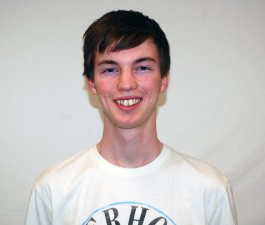

“I didn’t get any sleep last night.”
“Sodexo food is the worst.”
“Barnett Hall is a freezer.”
There is a good chance you have heard some of these expressions around campus. Although these sentences seem to have nothing in common, they all contain the same flaw — an “all or nothing” mentality. Black and white thinking — or “splitting,” as it is called in the field of psychology — is a dangerous linguistic trap that can impact our lives in more ways than we often are aware of. Thinking of the world in extremist terms downplays the gray areas and fails to properly reflect reality.
The English language has more words for describing extremes than it does for the middle ground. What is the middle ground between good and bad, up and down, or beautiful and ugly?
When we discuss gray areas, it often is in vague or general terms such as moderately good or the center, which makes the language less precise. Coming up with a word or phrase that actually describes a situation requires more effort and, in many cases, requires the speaker to step outside social norms. When someone asks, “How are you today?” the expectation usually is to respond with “Good,” or another polarizing word that oversimplifies how the day actually is going.
One downside to black and white thinking is an increase in stress. When people use oversimplified ideas to think about their homework load, their personal relationships, a negative event that just occurred and so on, the natural tendency is to rush to extremes. A person could perceive the amount of homework they have as requiring an all-nighter or as something that can be done quickly the next morning just before class. While there are cases when an extremes actually is true, most of the time reality resides in the gray area. There are consequences to thinking the extreme is true when the reality is gray — in the homework example, the person might decide to procrastinate when more work is necessary or ditch their friends when they don’t have to. Choosing either of these options causes preventable stress, low grades and strained friendships.
Additionally, acting on black and white impulses is often very irrational because the imagined reality is distorted. One example of this is thinking in racist terms, where the world becomes oversimplified and based on arbitrary differences in appearance. The thought that one group of people is better or worse than another group because of ethnic differences is supported by assumptions or isolated experiences that are used to represent all experiences. To argue, as one political figure notably has, that one race produces more rapists, murderers and drug dealers than other races creates a fantasy detached from real-
ity. This claim is built on the idea that one race is inherently bad without examining the complexities of social, political, economic and cultural forces that provide more detailed explanations. Thinking in such extreme terms is very easy, but it is a trap one should look out for.
By breaking out of the cycle of black and white thinking, we overcome simplifications and see the world as the complicated place it is. People who acknowledge the gray areas are more flexible, easier to work with and more likely to listen to a variety of different perspectives. Anyone, or nearly anyone, who thinks in oversimplified terms can begin to notice where their own thoughts are reduced to polarized extremes.
You have to ask yourself if you are using words that match the actual experience. Are you really never going to get your homework finished? Is that mixtape really the best? Is Sodexo really the worst? Sometimes an all or nothing mentality is accurate, but it should be questioned. It is also important to examine the ideas of other people, especially when they are influential or powerful, and question their simplifications. Reality is usually too complicated to look at with such extreme thoughts — you can’t just build a wall to solve every problem.
Will Chaney is a sophomore economics major from Bridgeton, Mo.
